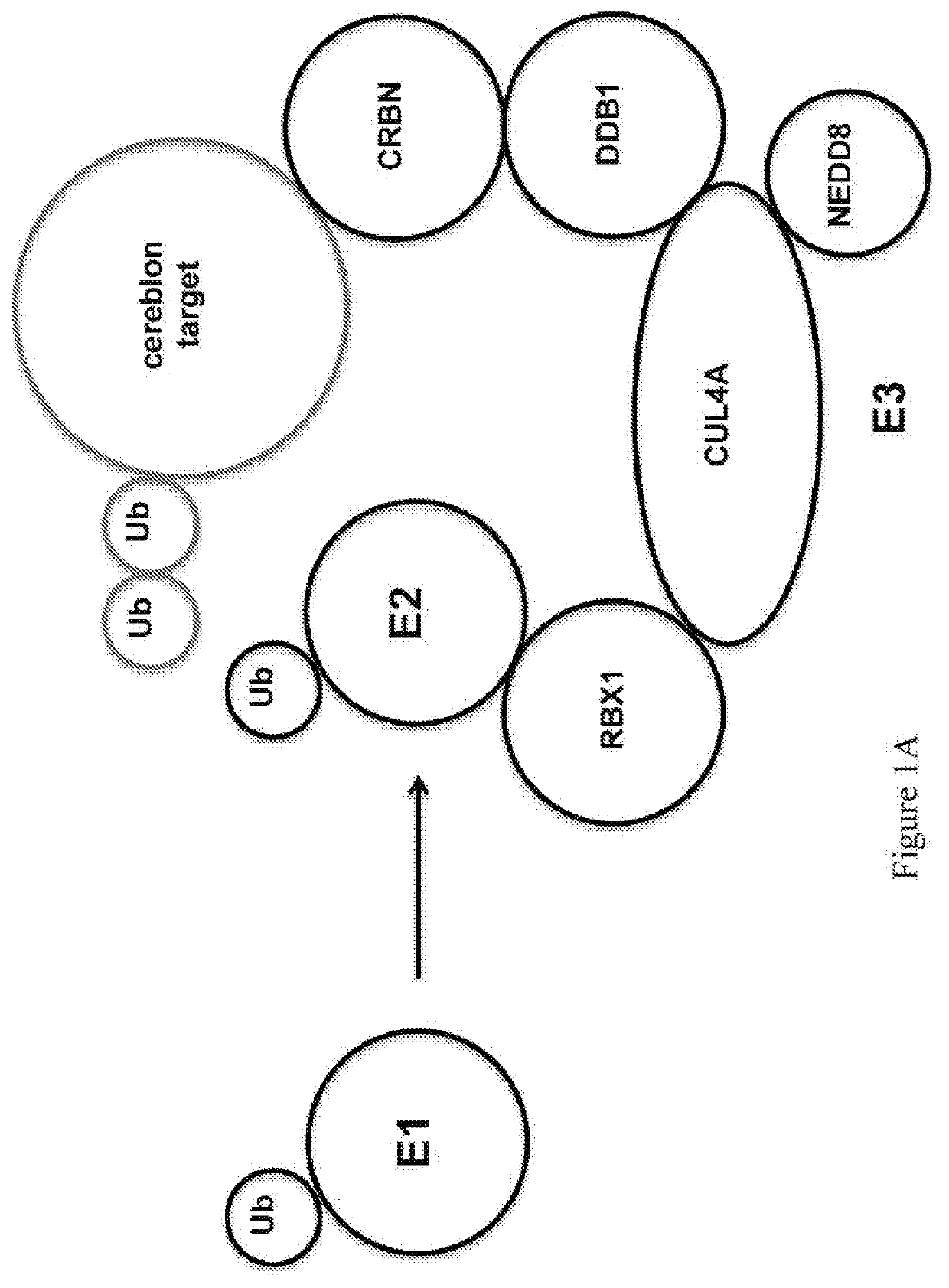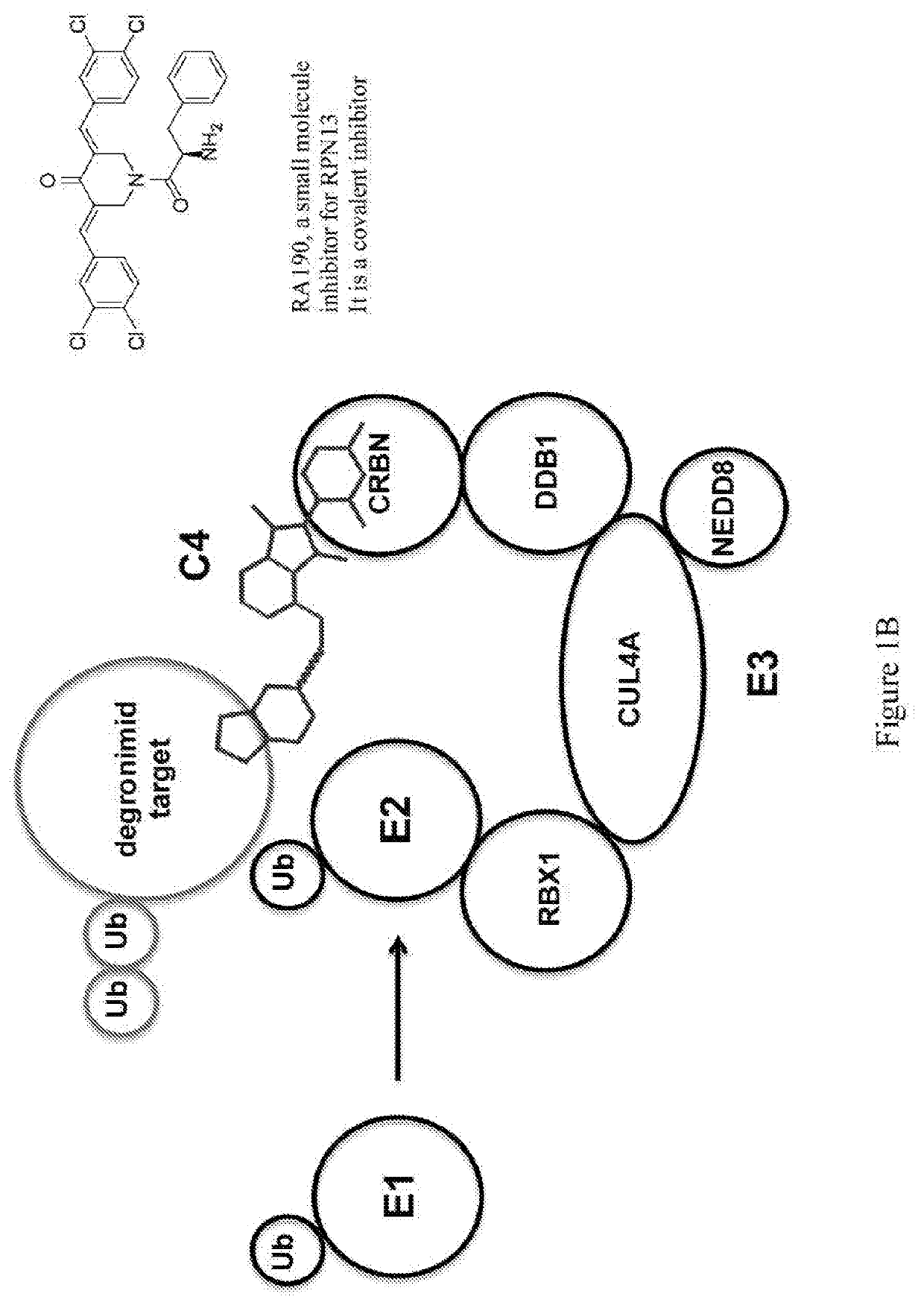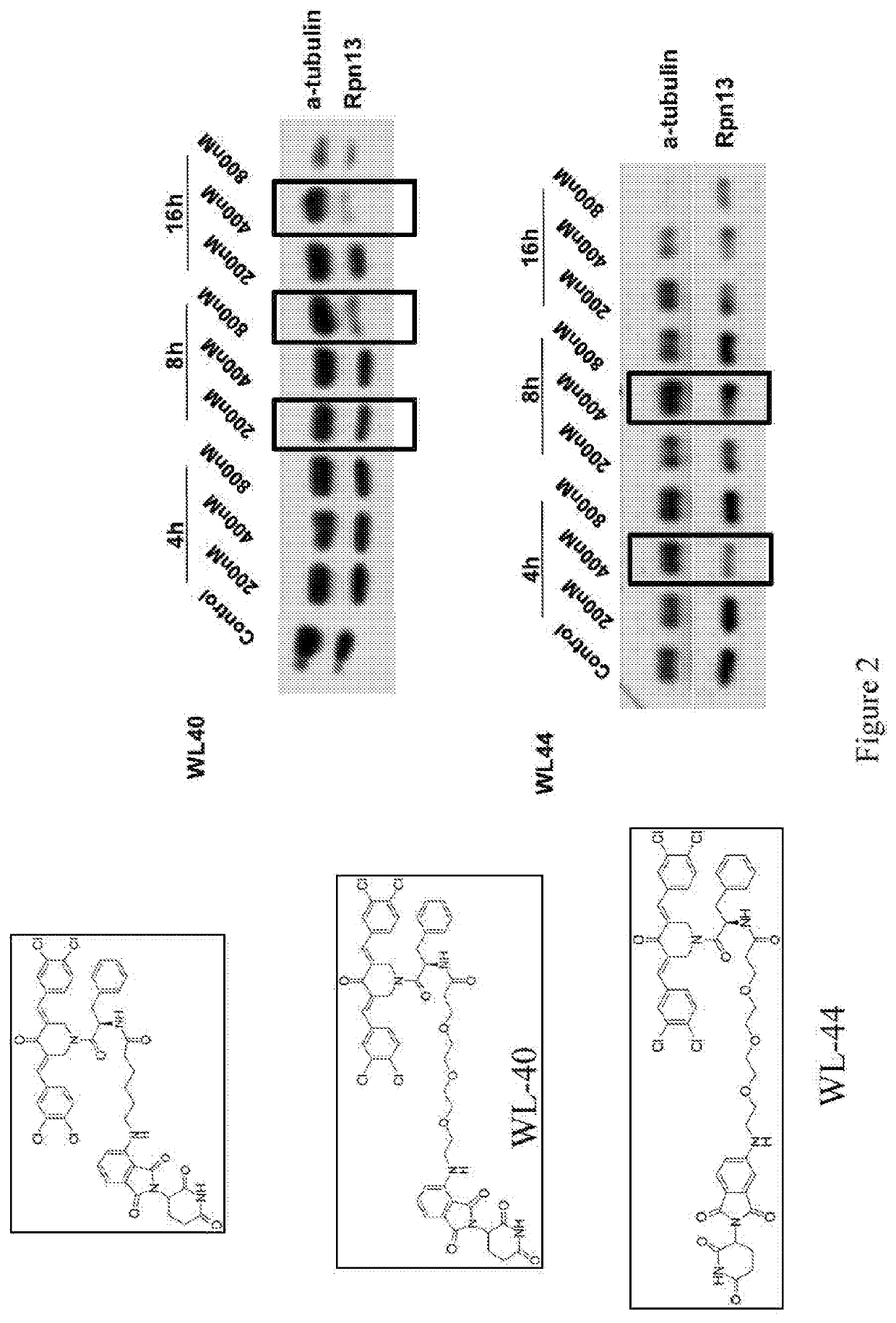Small molecules that block proteasome-associated ubiquitin receptor rpn13 function and uses thereof
- Summary
- Abstract
- Description
- Claims
- Application Information
AI Technical Summary
Benefits of technology
Problems solved by technology
Method used
Image
Examples
example 1
tal Procedures for Synthesis of RPN13 Compounds
Synthesis of LW-RPN13-4
[0341]In an exemplary synthesis, LW-RPN13-4 was synthesized using the steps shown in Scheme 1.
[0342](1) A4-((S)-1-(3,5-bis((E)-3,4-dichlorobenzylidene)-4-oxopiperidin-1-yl)-1-oxo-3-phenylpropan-2-yl)-N5-(15-oxo-19-((4S)-2-oxohexahydro-1H-thieno[3,4-d]imidazol-4-yl)-4,7,10-trioxa-14-azanonadecyl)glutaramide: To a solution of N-Biotinyl-(PEG)2-COOH.DIPEA (20 atoms) (5.37 mg, 0.0077 mmol), RA190 (4.46 mg, 0.0080 mmol) and HATU (4.36 mg, 0.0115 mmol) in DMF (0.2 mL) was added DIPEA (6 mg, 0.0400 mmol) at room temperature. The reaction mixture was stirred at room temperature for 15 minutes, and purified via HPLC (0.1% TFA / MeCN) to afford LW-RPN13-4 (6.79 mg). MS: m / z (M+1)+: 1103.42.
Synthesis of LW-RPN13-1
[0343]In an exemplary synthesis, LW-RPN13-1 was synthesized using the steps shown in Scheme 2.
[0344](2)N—((S)-1-(3,5-bis((E)-3,4-dichlorobenzylidene)-4-oxopiperidin-1-yl)-1-oxo-3-phenylpropan-2-yl)-3-(2-(2-(2-((2-(2,6...
example 2
RPN13 Degrader WL40
[0347]Proteasome inhibition is an effective treatment for multiple myeloma (MM); however, targeting different components of the Ubiquitin-Proteasome-System (UPS) remains elusive. RNA-interference studies described herein identified proteasome-associated ubiquitin-receptor Rpn13 as a mediator of MM cell growth and survival. Here, the exemplary degrader of Rpn13, WL40, was developed using a small-molecule-induced targeted protein degradation strategy to selectively degrade this component of the UPS. WL40 was synthesized by linking the Rpn13 covalent inhibitor RA190 with the Cereblon (CRBN) binding ligand thalidomide. WL40 binds to both Rpn13 and CRBN and triggers degradation of cellular Rpn13, and is therefore beneficial in exploiting a covalent inhibitor for the development of degraders. Biochemical and cellular studies show that WL40-induced Rpn13 degradation is both CRBN E3 ligase- and Rpn13-dependent. Importantly, WL40 decreases viability in MM cell lines and pa...
PUM
 Login to View More
Login to View More Abstract
Description
Claims
Application Information
 Login to View More
Login to View More - R&D
- Intellectual Property
- Life Sciences
- Materials
- Tech Scout
- Unparalleled Data Quality
- Higher Quality Content
- 60% Fewer Hallucinations
Browse by: Latest US Patents, China's latest patents, Technical Efficacy Thesaurus, Application Domain, Technology Topic, Popular Technical Reports.
© 2025 PatSnap. All rights reserved.Legal|Privacy policy|Modern Slavery Act Transparency Statement|Sitemap|About US| Contact US: help@patsnap.com



